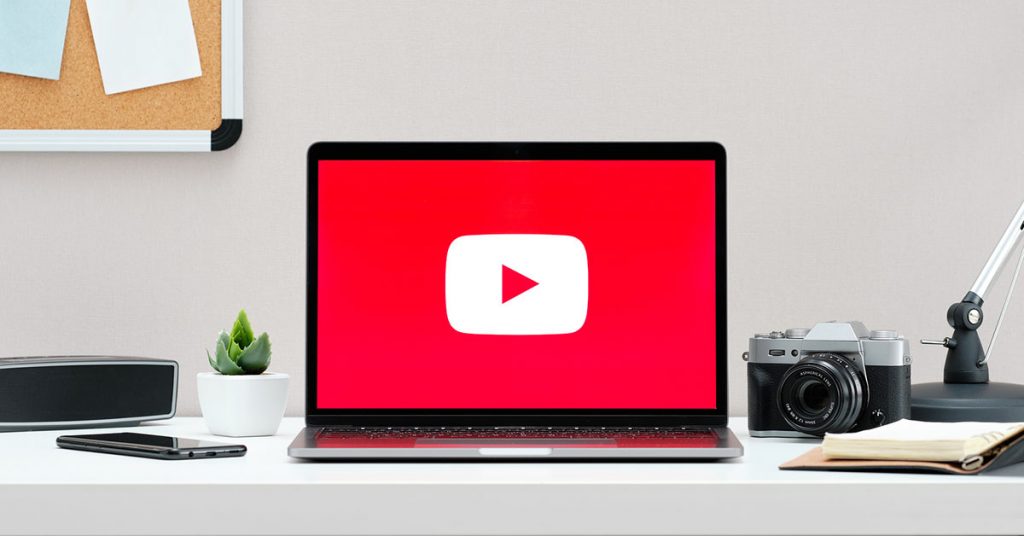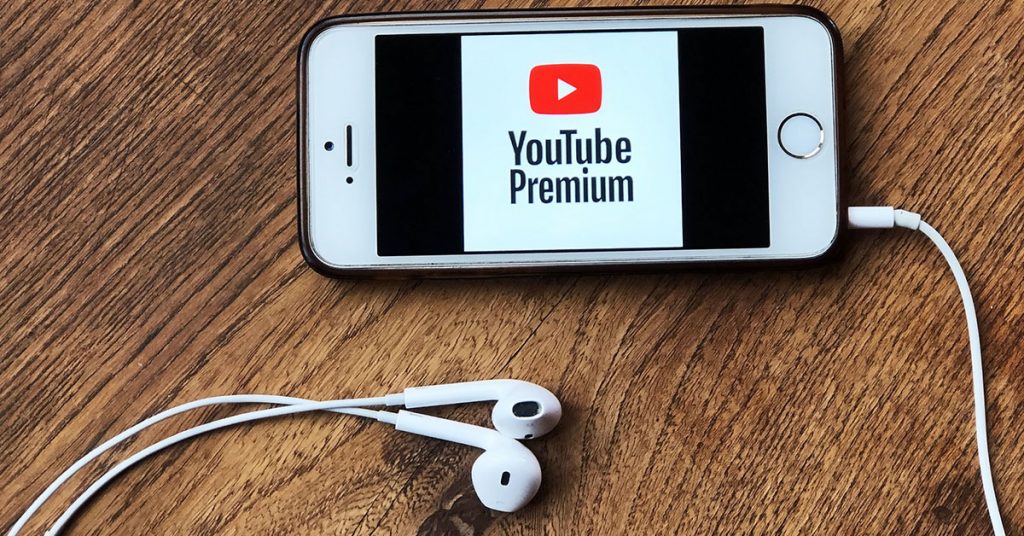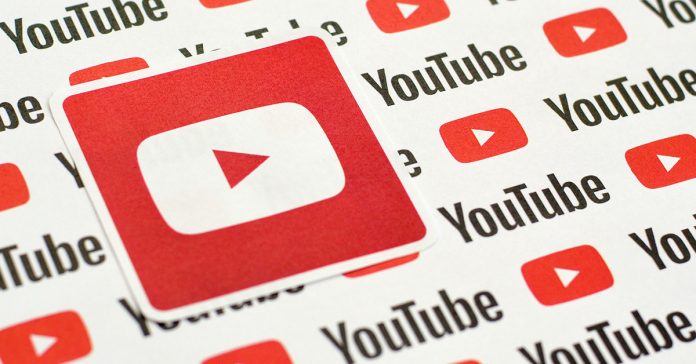YouTube is one of my favourite tools when it comes to learning a new language. In fact, with YouTube, you can learn just about any language on the planet. There are channels in French, German, Spanish and lots of other European languages, as well as plenty of content in less widely spoken languages. YouTube really is a great way to learn a new language.
Now, there’s no such thing as too much content. YouTube is one of the best ways to learn a language, and would be on any list of language learning tips (long or short). However, with so many videos to choose from, how do you find the right language learning resources for you? How do you avoid wasting time watching videos that won’t help you? Here are some handy tips on how to find the best YouTube channels for language learning.
1. Search For Language Courses

There are two really great things about YouTube. Firstly, there are a lot of language courses on there. Two, they’re 100% free. This means that the platform really is a great way to learn a new language.
To find a language course, all you need to do is type in “Spanish language online course” (or whatever language you’re currently learning). A lot of videos will pop up, but try not to feel overwhelmed. YouTube tends to rank videos according to their value, usefulness and popularity, so you can be sure that all the best ones are near the top.
Also, a really cool thing about YouTube is that, once you’ve watched a few of these videos, the website will start recommending you related videos. Even better, these videos will match your skill level.
2. Watch Movies and TV Shows
Some say they don’t bother watching movies and TV shows in a foreign language because it doesn’t help. I disagree; it can be very useful.
That said, it depends what you focus on. Remember, you’re not really doing this to watch the plot or take an interest in the characters. Instead, you’re more interested in what the actors are saying and how they’re saying it.
If you come across words you’ve never heard of before, take notes. Take notes of the way certain words are pronounced, too, and pay attention to any use of slang, as well as the way people talk in this language. Try to spot idioms and anything unusual that you’ve never noticed in the English language before.
YouTube doesn’t have a huge amount of blockbuster movies and TV shows, but it’s got a decent choice of free stuff. Also, you can rent some foreign movies and TV shows for a very small fee. YouTube really is a great way to learn a new language.
If you’re having trouble finding something to watch in your language, try Google to see if anything comes up.
3. Subscribe To Vlogs
Another really cool thing about YouTube is that anyone can upload videos. This means vloggers all around the world can create their own channel.
Whatever language you’re learning, there’ll be someone from that country who vlogs. However, it’s important to find someone who’s vlogging about something you’re actually interested in, be it fashion, beauty, video games, soccer, travel and so on.
When you’ve found a vlogger you like, try to watch as many of their videos as you can while paying attention to their pronunciation. If there are any words you’re unfamiliar with, write them down.
4. Start Commenting On Videos
Have you ever scrolled through YouTube comments and seen loads of comments in a foreign language? Well, now’s the time to start commenting in a different language yourself! The ‘comments’ feature is another thing that makes YouTube a great way to lean a new language.
Of course, commenting on YouTube videos in your own language can be daunting enough, because YouTube viewers love to call each other out.
However, expressing your opinion in a different language on a YouTube video means you’re taking baby steps towards being able to speak a new language fluently.
It’s not that hard to do, either. Just find a video you love (it could be one you’ve seen many times before, such as a music video) and leave a comment in Spanish, German, Italian, or whatever it is you’re learning.
The great thing about this is that – as I said – YouTube viewers are very opinionated. If they see that you’ve made a grammatical error, they may step in and correct you. Which is exactly what you want to happen! This will help you to keep improving.
5. Read Transcripts As You Listen To The Video

If you’re watching a video in a foreign language but you’re struggling to keep up, why not read the transcript?
Another great thing about YouTube is that a lot of the videos come with a transcript. This means you can read the words whilst listening to what the people in the video are saying. This will allow you to keep up, it will prevent you from straining too hard, and it will ensure you don’t miss a word. Study the words and the flow, pause the video whenever you need to, and make lots of notes. Accessing the transcript turns YouTube into the perfect language-learning tool.
Plus, this method also means you can easily copy words you haven’t come across before directly off the screen. However, what you don’t want to do is fall into the trap of relying too much on transcripts.
6. Slow The Videos Down
Have you noticed how quickly Spaniard’s speak? Wow! If you’ve always struggled to keep the pace with native speakers, another great thing about YouTube is that you can slow the videos down to a more – shall we say – acceptable level.
This is a trick I use all the time. YouTube allows you to pick a speed, or you can manually slow the video down by pressing the < or > keys on your keyboard. YouTube is yet again becomes a great way to lean a new language. Sure, the video might be a little weird slowed down, and you won’t be able to enjoy the drama. But that’s not the point: You’re slowing the video so as to get a better grasp of the language. Over time, you’ll be able to speed it up again and you’ll also understand what’s being said. You’ll be able to keep up!
7. Listen To Songs

Listening to songs is another great way to boost your language learning skills. Another benefit is that foreign language songs are way more widely available on YouTube than movies and TV shows. Pretty much any song you can think of is on there!
Naturally, it would help a lot if you could find artists you actually enjoy listening to, as this will encourage you to keep listening and learning. Maybe you could search for artists by genre, or perhaps you could take a look at forums on Reddit to find popular songs in a specific language.
Eventually, you’ll have memorised the lyrics and will be singing along in the shower!
8. Record Practice Videos and Upload Them
Admittedly, not everyone will want to do this as it does require a certain level of confidence. But if you’re feeling brave, why don’t you record your very own practice video before uploading it to YouTube?
This is a good way of holding yourself accountable to yourself. And if you’re fortunate, others will watch your videos and comment on them. Maybe there’ll be words of encouragement, as well as advice on where you need to improve.

I know this sounds a bit scary at first. The last thing some of us want is for our faces to be all over YouTube! Especially when we’re practising a language! But once you get past this fear, you never know what can happen. For example, your videos might end up inspiring others to reach their language goals. Wouldn’t that be amazing?
If you’re unsure how to start, I’ve made a few practice videos myself over the years and have a few tips and tricks to help you along the way.
9. Translate Comments
This is a bit of a fun one that is in no way a waste of your time.
The idea is that you pop onto a foreign language YouTube video and scroll down to the comments. Then, just for fun (and practice), you translate the comments!
YouTube viewers are definitely an odd bunch at times, and you’ll be surprised by some of the words you come across. But this is a great way to get an idea for how natives speak (and type). You’ll also pick up a few slang words and phrases you hadn’t come across before.
10. Subscribe to a Polyglot Channel
Polyglots are amazing – and they’re on YouTube. My final tip here is to seek out polyglots and subscribe to their channel. Some of my personal favourites include Olly Richards, Lucas Lampariello, Steve Kaufmann and Lindsay Williams. These channels mean that YouTube really is a great way to lean a new language.
If you want to discover how these polyglots and others mastered several languages, just subscribe to our channels and find out!
Over To You
YouTube isn’t just a time-wasting resource to be used to fill gaps in your day. It’s also an incredible way to learn a new language, especially if you’re one of those people looking to learn a language during COVID lockdown.
If you’ve been using YouTube to master a new language and have some tips and tricks of your own, don’t forget to leave a comment below!










